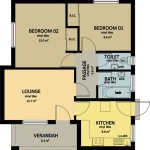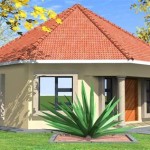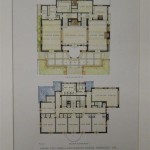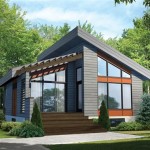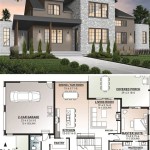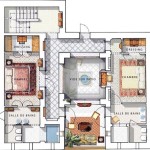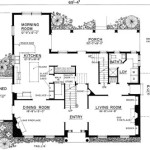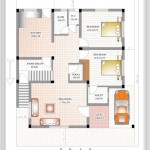Simple Cabin Floor Plans: A Guide to Efficient Design and Functionality
Simple cabin floor plans offer a practical and often economical solution for those seeking a retreat, a vacation home, or a minimalist lifestyle residence. These plans prioritize efficiency and functionality, maximizing usable space within a smaller footprint. Understanding the key elements of simple cabin floor plans is essential for achieving a comfortable and well-designed living environment.
The term "simple" in this context refers to the design philosophy, not necessarily the level of comfort or aesthetic appeal. Simple cabin floor plans typically avoid complex architectural features, opting for clean lines, open spaces, and a focus on essential living areas. This article will explore the core principles of these plans, highlighting key considerations and offering practical advice for planning a simple yet effective cabin layout.
Maximizing Space in Small Cabin Floor Plans
One of the primary goals of a simple cabin floor plan is to maximize the utilization of space, especially when dealing with smaller square footage. This requires careful consideration of room dimensions, furniture placement, and storage solutions. Every square foot should be thoughtfully allocated to serve a purpose and contribute to the overall functionality of the cabin.
Open floor plans are a common strategy for creating a sense of spaciousness in smaller cabins. Combining the living room, dining area, and kitchen into a single open space eliminates the need for dividing walls, which can constrict the flow of movement and make the cabin feel cramped. This layout promotes social interaction and allows natural light to penetrate more deeply into the interior.
Vertical space is another valuable resource that can be exploited in compact cabins. High ceilings, loft areas, and strategically placed shelves can significantly increase storage capacity and add visual interest to the interior. Loft areas can be used as sleeping quarters, home offices, or additional storage spaces, freeing up floor space for other essential functions.
Built-in furniture is a popular choice for maximizing space in small cabins. Built-in shelving, seating, and storage units can be custom-designed to fit specific dimensions and needs, eliminating the need for bulky freestanding furniture. These built-in elements can be seamlessly integrated into the architecture of the cabin, creating a clean and uncluttered aesthetic.
Multifunctional furniture is another key element in space-saving design. Furniture pieces that can serve multiple purposes, such as sleeper sofas, folding tables, and storage ottomans, can significantly reduce the number of items needed in the cabin. These adaptable pieces allow for flexibility in the use of space and can be easily reconfigured to accommodate different activities.
Careful attention should be paid to the placement of windows and doors to optimize natural light and ventilation. Large windows can bring in ample sunlight, making the cabin feel brighter and more spacious. Strategically placed windows can also provide views of the surrounding landscape, connecting the interior with the outdoors. The placement of doors should minimize wasted space and ensure efficient traffic flow throughout the cabin.
Finally, decluttering is essential for maintaining a sense of spaciousness in a small cabin. Minimizing unnecessary possessions and implementing effective storage solutions can help to keep the cabin tidy and organized. Regular decluttering can prevent the accumulation of clutter and ensure that the space remains functional and comfortable.
Essential Elements of a Functional Cabin Layout
Creating a functional cabin layout involves careful planning of the placement and relationship between different living areas. The layout should be designed to support the daily routines and activities of the occupants, ensuring ease of movement and efficient use of space. Several key elements contribute to a functional and comfortable cabin layout.
The kitchen is a crucial area in any cabin, and its layout should be carefully considered. A well-designed kitchen should provide ample counter space for food preparation, adequate storage for cookware and utensils, and efficient placement of appliances. A small kitchen can benefit from a galley layout, which maximizes counter space and storage along two parallel walls. An open kitchen layout allows for integration with the living and dining areas, promoting social interaction and making the space feel larger.
The bathroom is another essential area that requires careful planning. A compact bathroom should include a toilet, sink, and shower or bathtub. Space-saving fixtures, such as corner sinks and wall-mounted toilets, can help to maximize the available space. Adequate ventilation is essential to prevent moisture buildup and maintain air quality. Natural light can also enhance the feeling of spaciousness and create a more pleasant environment.
The sleeping area should be designed for comfort and privacy. In a small cabin, the sleeping area may be a bedroom or a loft space. A bedroom should be large enough to accommodate a bed, a nightstand, and a small wardrobe. A loft space can be accessed by a ladder or stairs and can provide a separate sleeping area that frees up floor space in the main living area. Proper ventilation and insulation are essential for ensuring a comfortable sleeping environment.
Storage is a critical consideration in any cabin layout. Adequate storage space is needed for clothing, linens, food, and other household items. Built-in shelving, cabinets, and drawers can provide efficient storage solutions. Utilizing vertical space with high shelves and loft areas can also increase storage capacity. Outdoor storage sheds or containers can be used to store larger items, such as tools and equipment.
The entrance area should be designed to provide a transition between the outdoors and the indoors. A small mudroom or entryway can provide a place to store coats, shoes, and other outdoor gear. This area can help to keep the cabin clean and organized by preventing dirt and debris from being tracked inside. A bench or seating area can also be included for convenience.
The placement of furniture should be carefully considered to ensure efficient traffic flow throughout the cabin. Furniture should be arranged to avoid obstructing pathways and to create a comfortable and inviting atmosphere. Minimizing the number of furniture pieces and choosing multifunctional furniture can help to maximize the available space.
Finally, accessibility should be a consideration in the cabin layout, especially for individuals with mobility limitations. Wide doorways, ramps, and accessible bathroom fixtures can make the cabin more user-friendly. Universal design principles can be incorporated into the layout to ensure that the cabin is accessible to people of all ages and abilities.
Adapting Simple Plans to Different Cabin Styles and Needs
Simple cabin floor plans are highly adaptable and can be tailored to suit different cabin styles and individual needs. Whether seeking a rustic retreat, a modern getaway, or a family vacation home, a simple plan can be modified to incorporate specific design elements and functional requirements. The key is to understand the core principles of the plan and to adapt them creatively to achieve the desired outcome.
For a rustic cabin, the floor plan may emphasize natural materials, such as wood and stone. Exposed beams, wood-paneled walls, and a stone fireplace can create a warm and inviting atmosphere. The layout may include a large porch or deck for enjoying the surrounding nature. The kitchen may feature a farmhouse sink and rustic cabinetry. Storage solutions may incorporate repurposed materials, such as salvaged wood and metal.
For a modern cabin, the floor plan may prioritize clean lines, minimalist design, and a focus on natural light. Large windows, skylights, and open spaces can create a bright and airy interior. The layout may incorporate smart home technology and energy-efficient features. The kitchen may feature sleek cabinetry, stainless steel appliances, and a modern island. Storage solutions may be integrated seamlessly into the architecture of the cabin.
For a family vacation home, the floor plan may need to accommodate multiple bedrooms, bathrooms, and living areas. A large open living area can provide a gathering space for family members. A separate recreation room or game room can provide entertainment for children and adults. Outdoor spaces, such as a deck, patio, or fire pit, can provide opportunities for outdoor activities and relaxation. Storage solutions may need to be more extensive to accommodate the needs of a larger family.
The specific needs and preferences of the occupants should also be considered when adapting a simple cabin floor plan. For example, someone who enjoys cooking may prioritize a larger kitchen with ample counter space and storage. Someone who works from home may need a dedicated home office space. Someone with mobility limitations may require accessible features throughout the cabin.
The location and climate of the cabin should also be taken into account. In a cold climate, the floor plan may need to incorporate features such as a mudroom, a wood-burning stove, and extra insulation. In a hot climate, the floor plan may need to prioritize natural ventilation, shade, and outdoor living spaces. The orientation of the cabin can also be optimized to take advantage of sunlight and prevailing winds.
Finally, the budget for the cabin should be considered when adapting a simple floor plan. Complex architectural features and high-end finishes can significantly increase the cost of construction. Choosing simple materials, utilizing readily available resources, and minimizing unnecessary features can help to keep the cost down. A well-planned and budget-conscious adaptation can result in a functional and comfortable cabin that meets the needs of the occupants.
In conclusion, simple cabin floor plans offer a versatile and efficient approach to designing a comfortable and functional living space. By understanding the principles of space maximization, functional layout, and adaptability, one can create a cabin that meets specific needs and preferences while remaining practical and aesthetically pleasing. Through careful planning and thoughtful design, a simple cabin floor plan can serve as the foundation for a truly remarkable retreat.

Small Cabin Designs With Loft Floor Plans

Rustic Log Cabin Floor Plans

13 Best Small Cabin Plans With Cost To Build Tiny Simple

Small Cabin Floor Plan 3 Bedroom By Max Fulbright Designs
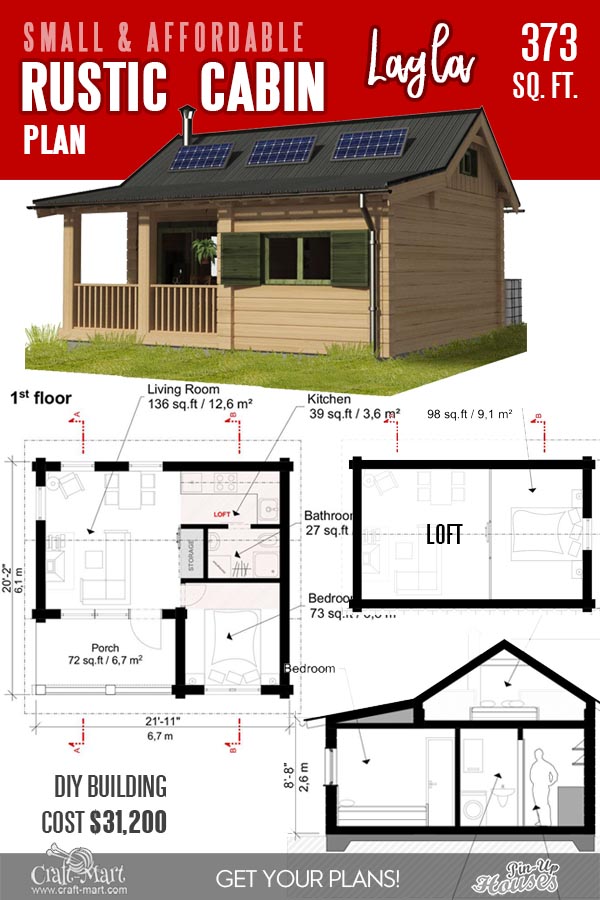
13 Best Small Cabin Plans With Cost To Build Craft Mart

The Small Cabin House Living Perfectly Large In 600 Square Feet

Cabin Floor Plans Small

Rustic Vacation Homes Simple Small Cabin Plans Houseplans Blog Com

Small Log Homes Kits Southland

Unique Small 2 Bedroom House Plans Cabin Cottage

